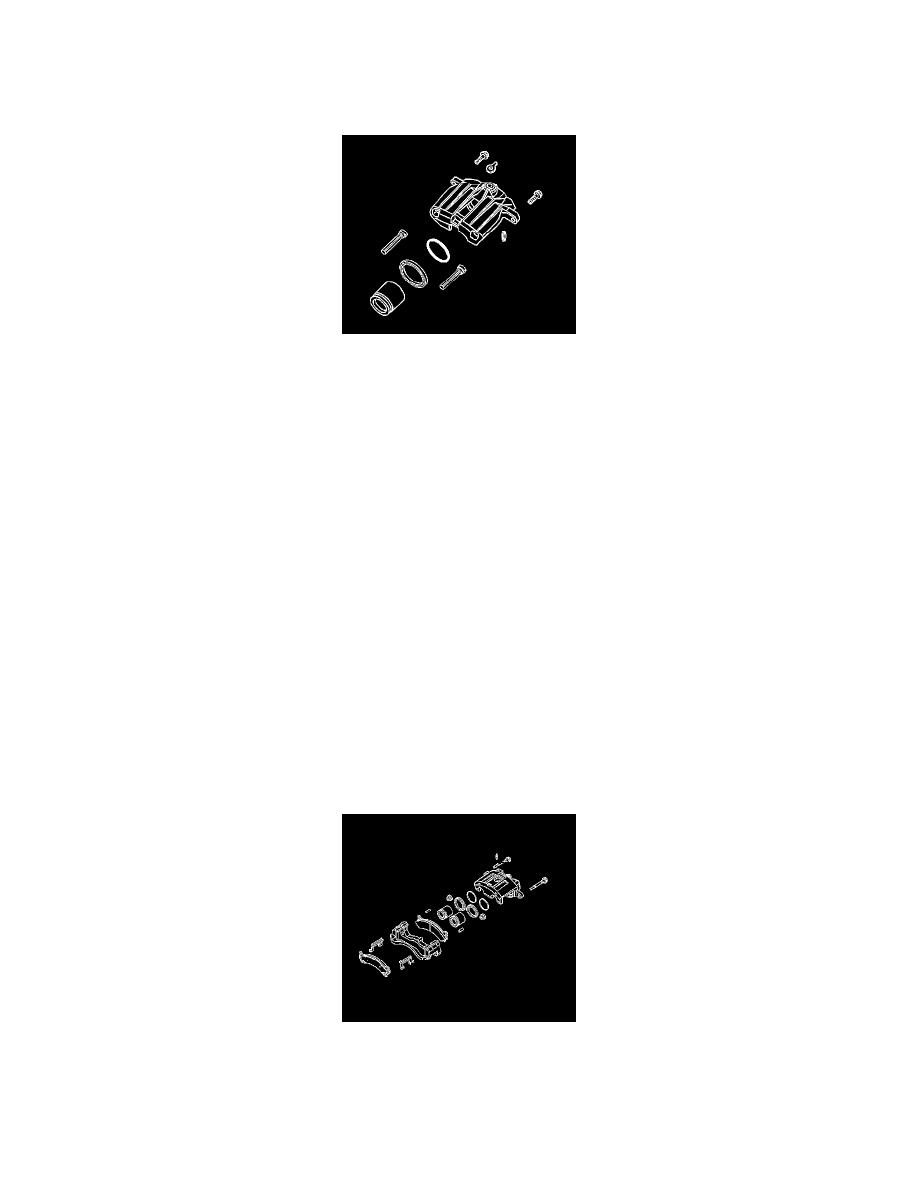Express 3500 V8-6.0L (2010)

10. Clean all of the parts not included in the repair kit with denatured alcohol.
11. Dry all the parts with non lubricated filtered compressed air.
12. Blow out all passages in the brake caliper housing and the brake caliper bleeder valve.
Assembly Procedure
Caution: Refer to Fastener Caution (See: Service Precautions/Vehicle Damage Warnings/Fastener Caution).
1. Install the brake caliper bleed screw and tighten to 12 Nm (106 lb in).
2. Install the brake caliper bleed screw cap.
3. Lubricate the new piston seal and the brake caliper bore seal groove with brake fluid.
4. Install the new seal into the brake caliper bore seal groove.
5. Ensure that the seal is not twisted.
6. Lubricate the brake caliper bore and the piston with brake fluid.
7. Install the boot and piston.
1. Install the boot over the end of the piston so that the fold will face toward the brake caliper housing piston bore opening.
2. Seat the boot into the brake caliper bore groove. Slide the piston into the brake caliper bore.
3. Push down the piston to the bottom of the brake caliper bore.
4. Ensure that the boot is properly seats into the piston groove and into the groove in the brake caliper bore.
8. Install the brake caliper to the vehicle. Refer to Rear Brake Caliper Replacement (JH5, JH6) (See: Removal and Replacement/Rear Brake Caliper
Replacement (JH5, JH6))Rear Brake Caliper Replacement (JH9) (See: Removal and Replacement/Rear Brake Caliper Replacement (JH9)).
Rear Brake Caliper Overhaul (JH6)
Rear Brake Caliper Overhaul (JH6)
Warning: Refer to Brake Dust Warning (See: Service Precautions/Technician Safety Information/Brake Dust Warning).
Warning: Refer to Brake Fluid Irritant Warning (See: Service Precautions/Technician Safety Information/Brake Fluid Irritant Warning).
Disassembly Procedure
Note:
*
Replace all the components included in the repair kits used to service this brake caliper.
*
Lubricate the rubber parts with clean brake fluid to make assembly easier.
*
The torque values specified are for dry, non lubricated fasteners.
*
Perform the service operations on a clean bench, free from all mineral oil materials.
